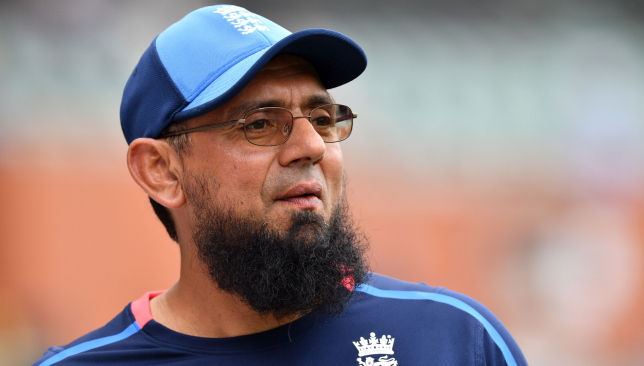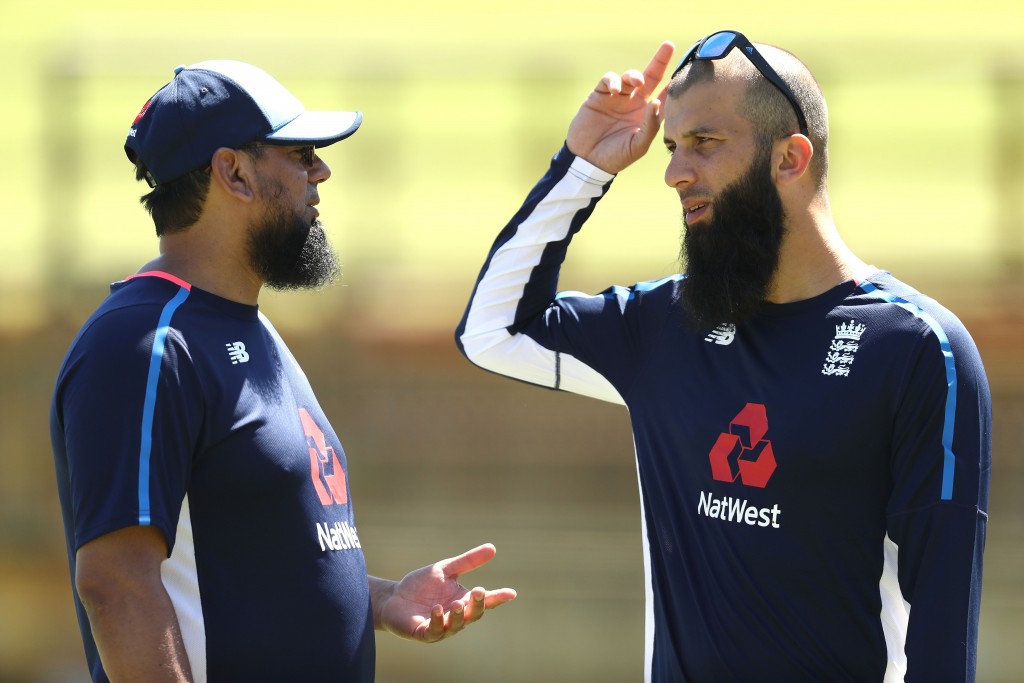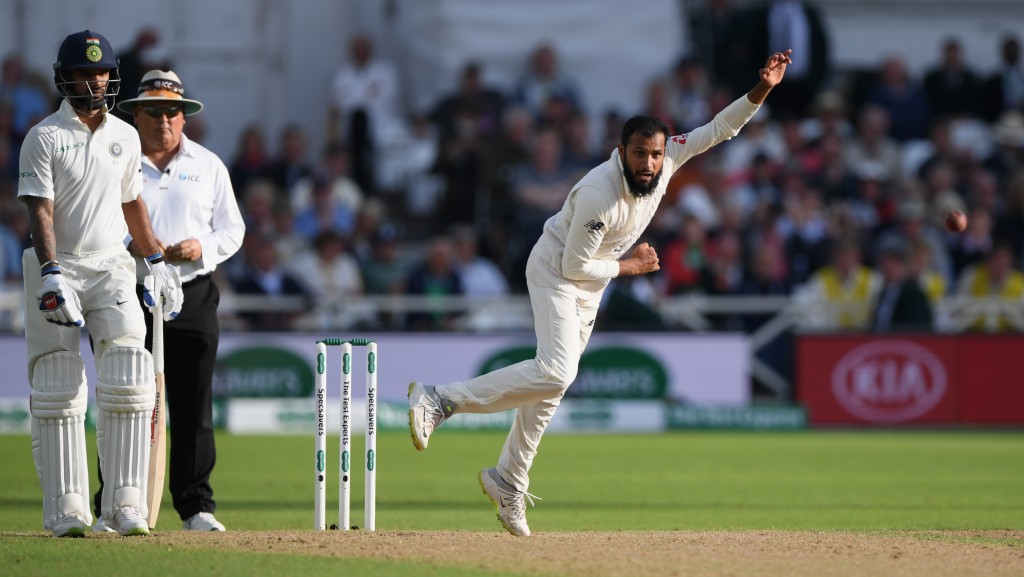
Over the years the art of spin bowling has formed a magical and mystical part of cricket lore.
From Jim Laker to Shane Warne to the twirling village club veteran who always gets more scalps than any tearaway, the slow bowlers have always kept admirers rooted to their seats and batsmen to the crease.
Though not a dying practice by any means, it remains rare to see it developed to its full potential, requiring the right tools and mindset.
One spin bowler who certainly brought innovation to the trade was Saqlain Mushtaq.
It would have been fair to wonder what a skinny kid from the Qila Gujar Singh area of old Lahore could bring to the game. Such was his success that in the end he would even add to cricket’s vernacular, a mystery delivery others just did not know how to bowl or face – the doosra.
After a career that saw him take nearly 500 wickets for Pakistan across Tests and ODIs, the long-time Surrey spinner moved into coaching.
He has worked with the squads of most Test-playing nations, though strangely enough not Pakistan, and is now acting as England’s official spin consultant.
Below, Amer Malik talks to one of the world’s most prominent spin artists.
Having played for so many years, what prompted you to go down the coaching path?
SM: In 2004, I knew the only option was coaching. I still played county cricket, but was hindered by so many injuries, especially with my knees. My intention was not to leave the game as it had given me a fantastic career, it’s my passion and love – after my wife of course. Plus I was also inspired at a very young age by my club coach at Zariff Memorial Club in Lahore, and the respect that one got from that made me want to choose that path.
Have you ever applied for a coaching role within the Pakistan coaching infrastructure? One would think they would want to use your cricketing knowledge.
SM: I’ve lived in Leicester (in England) for the last few years though have gone back to Pakistan temporarily in the last three years. I never applied when I was here. I coached Somerset, Middlesex and to a small extent Surrey, and also with the England Lions in 2007.
I started my own academy in Leicester so it was not always easy going for other roles. I applied for a position when the [Pakistan Super League] initially started, knowing that I met the criteria, but heard nothing.
Prior to this I did some remedial biomechanics work with Saeed Ajmal to help him with his action. Even then nothing materialised. On another occasion I was approached by Mudassar Nazar asking me to conduct a 20-day talent hunt in Pakistan. Once again it came to nothing.
I was made to feel a non-entity by the country for whom I gave my blood, sweat and tears. Having even applied for the role of head coach when Waqar Younis vacated the post, I was informed that my application had never been received, at which I could only laugh.
How have you evolved as a coach? Do you bring new innovative measures to the role?
SM: You are learning all the time, applying different methods with different individuals, as they all have dissimilar traits though the eventual goal is the same. So it’s about adapting and learning as you go along. In the last couple of months I have spent a lot of time with Moeen Ali, Adil Rashid, Dom Bess and Jack Leach, all fantastic bowlers in their own right, all dedicated to the England cause, but individually different techniques.
So with one I’d have to work with the bowling arm and the other maybe more work on the guiding arm, or totally different from this could be working on the bowling stride. No player is the same, so you adapt to that.

Why are most unorthodox spin bowlers produced in the subcontinent?
SM: Mostly due to conditions being different here than in England, which suits seam and swing, hence why legends such as Ian Botham, Jimmy Anderson and Stuart Broad have been so inspirational here.
In the warmer, drier countries, we had the likes of Abdul Qadir, Tauseef Ahmed, Iqbal Qasim and Mushy bhai (Mushtaq Ahmed). I was inspired by these guys but also by my brothers, who played at very decent first-class level, and were both good spinners in their own right. I wanted to be creative, wanted to think out of the box hence why the doosra was incorporated.
I wanted to have something unique, and this was definitely ahead of its time. Now you have almost every offie trying to invent or incorporate a new delivery. I feel as if I’ve contributed to this mindset.
In the southern warmer climates of Pakistan you will find great spinners everywhere. In northern Punjab you’ll find people trying to emulate the Waqars, Imrans and Wasims, plus conditions are somewhat more conducive to that type of bowling.
Ajantha Mendis, in my opinion, bought more innovation into the game with his ‘Carrom ball’. Sunil Narine of the West Indies in the short format is always trying different things. Whereas Dan Vettori, a great bowler in his own right though orthodox, had a great arm ball.
Having consulted for and coached teams from the West Indies, New Zealand, Australia, and now England, have you seen potential in any of those to produce a future world-class spinner?
SM: I think Adil and Moeen come into that class, but need to play more cricket. Devendra Bishoo from the West Indies. Again Narine in the shorter format. (Adam) Zampa for Australia who is now playing club cricket for Brentwood here in England and Essex in the T20 format. The longer they play the better chance they have of becoming world-class in their own right. And not forgetting Rashid Khan of Afghanistan who has made a massive impact and is already playing IPL at the relatively young age of 19.
Eid Mubarak @Saqlain_Mushtaq bhai 🙏🙏 pic.twitter.com/mUm703clm4
— Harbhajan Turbanator (@harbhajan_singh) August 22, 2018
When you were a young player, you didn’t have all the facilities or know-how of the modern game. What would you advise current players hoping to emulate the likes of yourself and Shane Warne?
I’m a firm believer in three things that helped me to become an international player. They are quality, quantity and continuity.
Quality: In terms of physical training everything should be of the utmost quality. Do not let yourself falter.
Quantity: The more you bowl, you will get know yourself. Don’t give up bowling for a few days, this will help you with your self-confidence and belief. It will help your control and muscle memory.
Continuity: To keep on practising, you have to bowl day in day out, with no time off. Sounds a lot, but dedication is an integral part of success.
If you have these three traits then you can achieve your goal of playing cricket at the highest levels. These are the attributes I demanded from myself. I played at school in the mornings, then in the evening, I did this every day, sometimes playing in the region of 20 matches per month.
How would you describe the rise of Moeen Ali only for him to be so ineffective during the Ashes?
He had great success in England last summer, with some match-winning and match-defining performances, though unfortunately when he arrived in Australia he injured himself so couldn’t prep or adjust thoroughly.
Plus the first Test where he bowled, it was with a relatively new ball, with a hardened seam which cut into his spinning finger, and due to this he severely struggled. His prep due to injury hindered his performance for the rest of the series.
Also you can say there was the extra expectation, especially after he played so well the previous summer, and also that Nathan Lyon was bowling well. Moeen is a gentleman cricketer, he works hard at his game and I am 200 per cent confident that he will come back even better.
Do you think it’s essential that Adil Rashid starts to play the four-day game again for his county?
It’s entirely up to him, though I think he should play. Also it’s a great decision by new chief selector Ed Smith to bring him back into the Test fold. He has some great deliveries in his armoury. I hope the ECB, Yorkshire and Rash all sit down together and discuss this. He is too much of a talent to go to waste.

Why aren’t county sides producing more international-class spin bowlers?
One, the weather. Two, they heavily rely on seamers in this country due to the first point. There are no dedicated county spin coaches. There should be one for each county. Spinners are dominating in all formats and there should be specialist coaches. There is no one to look after the spinners, almost each county has a specialist coach for batting, fielding, seam bowing and wicket keeping, but no spin bowling coach.
Are their any potential county bowlers that we should keep an eye out for in the future?
SM: Yes, most definitely, though not enough. But Amar Virdi of Surrey, and at Somerset, Jack Leach and Dom Bess. Other than that no one has really caught my eye. There are youngsters whom I’ve seen coming up through the age groups – they should be carefully nurtured. If there aren’t any specialist spin coaches, potential stars will slip through the net and into obscurity.
I have spoken to people in the hierarchy that they should invest in maybe six coaches who can travel the county circuit to nurture the spin talent, then collate their results.